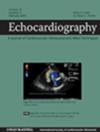Echocardiographic Parameters of Right Ventricular Size and Function Associated With Right Heart Failure After Durable Left Ventricular Assist Device Implantation—A Systematic Review and Meta-Analysis
Abstract
Background
Late-onset Right Ventricular (RV) failure is an established complication of Durable Left-Ventricular Assist Device (D-LVAD) implantation. Transthoracic echocardiography (TTE) remains the primary imaging modality for serial monitoring in this population, but its interpretation remains challenging due to device-related changes in RV size and function and a lack of guidelines addressing this impact. This study aims to examine the diagnostic and prognostic utility of TTE parameters of RV size and function in the detection of late-onset RV failure post-implantation.
Methods and Results
A systematic literature search of medical databases was performed to identify all relevant studies assessing TTE parameters in adult patients with D-LVADs (January 2003–August 2023; English only). Of the 350 studies identified, nine studies with a pooled cohort of 627 patients and three studies with a pooled cohort of 175 patients (40 Cases and 135 controls) were meta-analyzed across a range of structural and functional TTE parameters. Compared to World Alliance Societies of Echocardiography (WASE) reference values, this population had dilated RV size (as quantified by RVEDD) and reduced systolic function (as quantified by TAPSE, RVFAC, and RVEF). TAPSE was positively associated with the non-RVF group, while RVEDD was negatively associated with the non-RVF group.
Conclusions
Based on the available studies, there was baseline RV dilatation and reduced systolic function in patients with D-LVADs. Additionally, TAPSE and RVEDD demonstrated a statistically significant association with the development of RVF post-implantation, indicating a potential role as prognostic markers. Further studies should also be conducted to establish post-implantation TTE reference values.


 求助内容:
求助内容: 应助结果提醒方式:
应助结果提醒方式:


